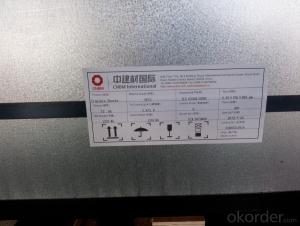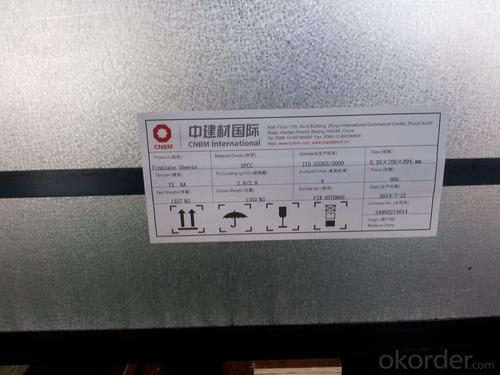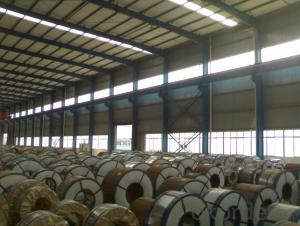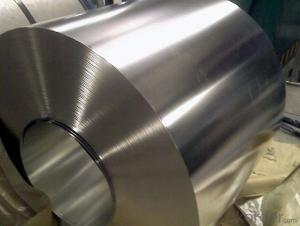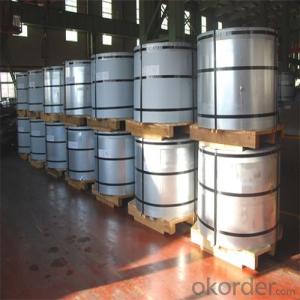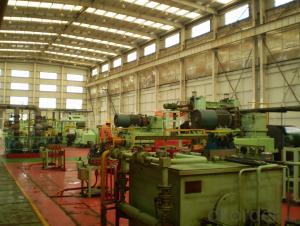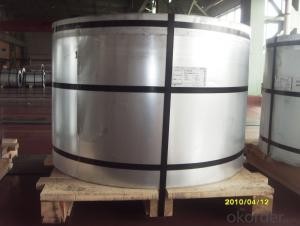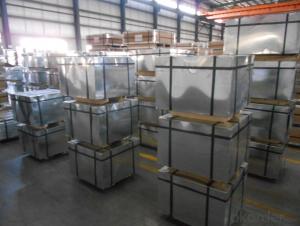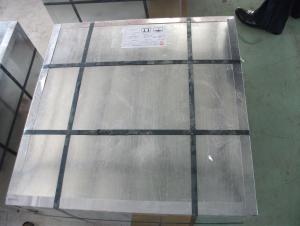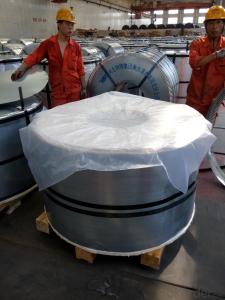Tinplate of Prime or Secondary
- Loading Port:
- China Main Port
- Payment Terms:
- TT OR LC
- Min Order Qty:
- -
- Supply Capability:
- -
OKorder Service Pledge
OKorder Financial Service
You Might Also Like
Our Tinplates Specification:
Standard: ISO 11949 -1995, GB/T2520-2000,JIS G3303,ASTM A623, BS EN 10202
Material: MR,SPCC
Thickness:0.15mm - 0.50mm
Width: 600mm -1150mm
Temper: T1-T5; DR8 - DR10;
Annealing: BA & CA
Passivation:311
Oil: DOS
Surface: Finish,bright,stone,matte,silver
Packing:
1、For sheets: plastic or waterproof paper, metallic cover and angles, steel strips,wooden pallet.
2、For Coils: plastic or waterproof paper,plastic protect plate,steel strips.
Coil Inner Diameter: 508mm
Weight: 6-10 tons/coil
Application: widely used in every kinds of packing cans,such as tea packaging cans, painting packaging cans, chemical packaging cans and dry food packaging cans; and also mechanical parts
Both Prime and Second Quality Are Available!!!
- Q: What are the main factors affecting the price of tinplate?
- The main factors affecting the price of tinplate include the cost of raw materials, such as tin and steel, supply and demand dynamics, global economic conditions, currency exchange rates, changes in government policies and regulations, and market competition. Other factors like transportation costs, energy prices, and the overall health of the manufacturing sector can also impact the price of tinplate.
- Q: How does tinplate compare to paperboard in terms of packaging applications?
- Tinplate and paperboard have different characteristics that make them suitable for different packaging applications. Tinplate is a durable and corrosion-resistant material that is commonly used for packaging products that require protection from moisture, air, and light, such as canned food and beverages. It offers excellent barrier properties and can be easily shaped into various forms, making it ideal for products that require a tight seal. On the other hand, paperboard is a versatile and cost-effective option for packaging applications. It is lightweight, recyclable, and biodegradable, making it environmentally friendly. Paperboard is commonly used for packaging dry goods, such as cereal boxes, cosmetics, and pharmaceuticals. It provides good printing capabilities, allowing for attractive and informative designs. In summary, tinplate is preferred for products that require strong protection and preservation, while paperboard is suitable for lightweight products that benefit from eco-friendly packaging options. The choice between the two materials depends on the specific needs of the product and its target market.
- Q: What are the common sizes and shapes of tinplate containers?
- Common sizes and shapes of tinplate containers include round cans, rectangular tins, and square boxes. These containers come in various sizes, ranging from small ones that can hold a few ounces to larger ones that can store several pounds of products.
- Q: What are the main safety regulations for tinplate production and use?
- The main safety regulations for tinplate production and use include ensuring proper ventilation and exhaust systems to prevent exposure to harmful fumes, implementing effective fire prevention and control measures, providing personal protective equipment for workers such as gloves and goggles, conducting regular maintenance and inspection of equipment to prevent accidents, and adhering to strict quality control standards to ensure the safety of the final product. Additionally, proper training and education about safety protocols should be provided to all employees to minimize risks and ensure a safe working environment.
- Q: What are the main trends in tinplate packaging?
- The main trends in tinplate packaging include a shift towards eco-friendly and sustainable materials, increased customization options for branding purposes, and the integration of technology for improved convenience and functionality.
- Q: What are the advantages of using tinplate for automotive parts?
- Tinplate offers several advantages for automotive parts. Firstly, it provides excellent corrosion resistance, making it ideal for parts exposed to harsh environmental conditions. Additionally, tinplate offers good formability, allowing for complex shapes and designs, providing flexibility in manufacturing. It also offers high strength and durability, ensuring long-lasting performance and safety. Furthermore, tinplate is lightweight, contributing to improved fuel efficiency and reduced emissions. Lastly, it is a cost-effective material, providing value for money in automotive part production.
- Q: Can tinplate be used for household appliances?
- Yes, tinplate can be used for household appliances. Tinplate is a type of steel coated with a thin layer of tin, which provides corrosion resistance and makes it suitable for various applications including household appliances such as cans, containers, and even electrical components.
- Q: Is to buy canned tinplate or aluminum
- Tinned food is usually made of tinplate, because the strength of tin is higher than that of aluminum cans, and the tin can not be deflatedAluminium is generally used in carbonated beveragesTin can be best served from the point of view of transport
- Q: How does tinplate contribute to the preservation of tobacco products?
- Tinplate contributes to the preservation of tobacco products by providing a durable and airtight packaging solution. The tin coating on the steel sheet prevents the tobacco from exposure to moisture, light, and oxygen, which can degrade its quality. Additionally, tinplate offers protection against physical damage, ensuring that the tobacco remains intact and fresh for an extended period of time.
- Q: How is tinplate coated for pharmaceutical packaging?
- Tinplate for pharmaceutical packaging is typically coated using a process known as electrolytic tin coating. This involves immersing the tinplate in an electrolyte solution and passing an electric current through it. The electric current causes tin ions to be deposited onto the surface of the tinplate, creating a thin and uniform layer of tin coating. This coating provides a protective barrier against corrosion and ensures the safety and integrity of the pharmaceutical products packaged within.
Send your message to us
Tinplate of Prime or Secondary
- Loading Port:
- China Main Port
- Payment Terms:
- TT OR LC
- Min Order Qty:
- -
- Supply Capability:
- -
OKorder Service Pledge
OKorder Financial Service
Similar products
Hot products
Hot Searches
Related keywords
